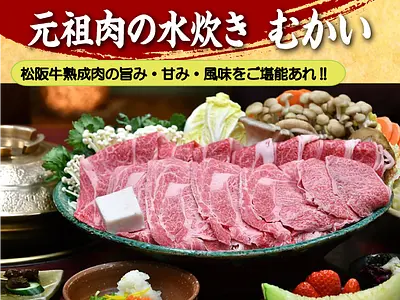I went to see the 30th special exhibition at the Mie Prefectural Museum (MieMu), “Discovering and rediscovering famous places! ~Exploring the charms of Mie through ukiyo-e~”! Advertisement
掲載日:2022.05.09
At the Mie Prefectural Museum (MieMu), the 30th special exhibition "Discovering and rediscovering famous places! - The charm of Mie through ukiyo-e" will be held from Saturday, April 16, 2020 to Sunday, June 12, 2020. It is held until. This project was scheduled to be held in 2020 but was canceled due to the coronavirus pandemic, but it will be revived at the latest. We introduce famous places in Mie Prefecture through ukiyo-e, folding screen paintings, and picture scrolls.
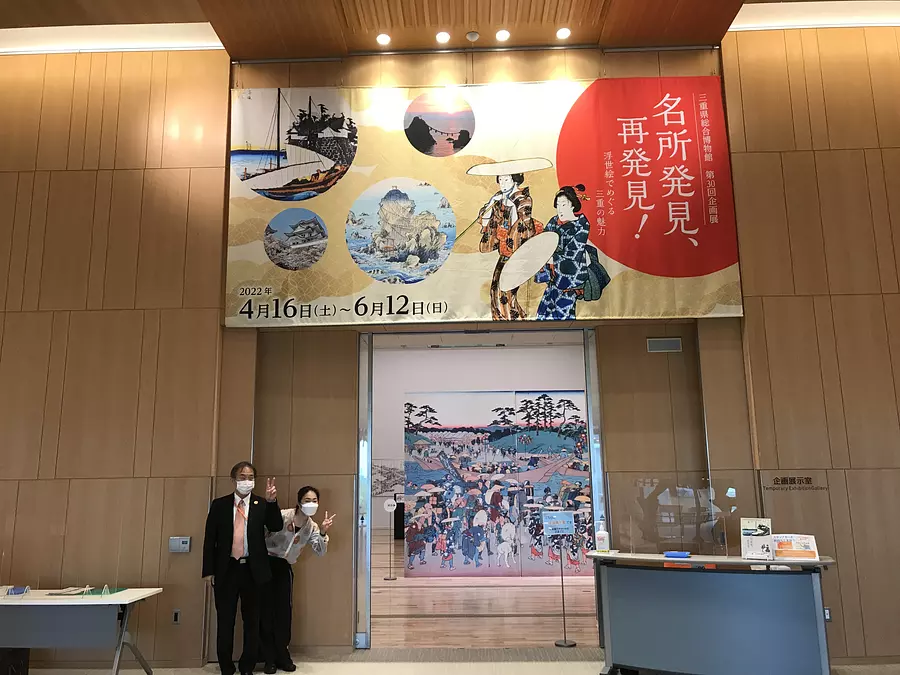
*Please note that this article contains sections that provide detailed information about the exhibition contents (so-called spoilers).
*The article content is as of April 17, 2020, and includes content that cannot be viewed at this time due to exhibition changes.
The day of my interview, April 17th, was ``MieMu Day'' (the day of the museum's 8th anniversary event). On this day, there was a project where visitors wearing orange goods, which is the museum's theme color, would receive a souvenir, so we expected it to be crowded, so we had a special look at the museum before it opened. The curators also welcomed us wearing goods related to MieMu's theme color, orange. The curators seem kind, so you can ask them anything you want.
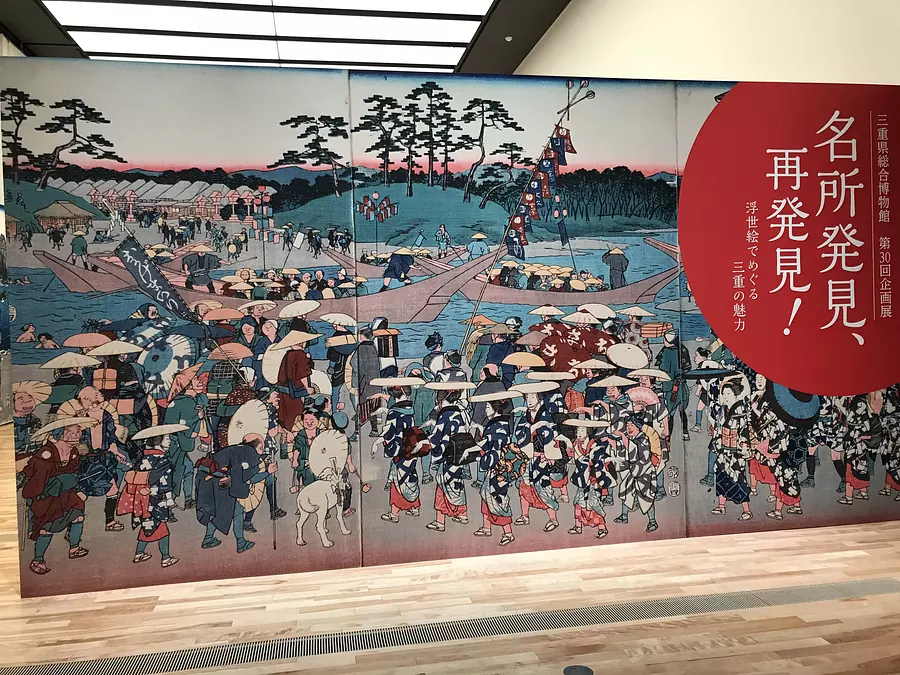
At the entrance to the special exhibition room, there is a huge panel displaying an enlarged version of the ukiyo-e ``Ise Sangu Shrine Miyagawa Ferry.'' It depicts the lively scene of the Okagemiri festival, which happens once every 60 years, and at times over 4 million people head to Ise. There are famous stories about children and women sneaking out of their workplaces to visit Ise Shrine, and stories about dogs visiting Ise Shrine, but this ukiyo-e also depicts dogs along with men and women of all ages.
The exhibition room is dimly lit to prevent deterioration of old historical materials, and photography is prohibited, but we received special permission from the museum to take an overview of the exhibition room and use the photo in an introductory article. . Similarly, we only photograph items in the Mie Prefectural Museum's collection with permission.
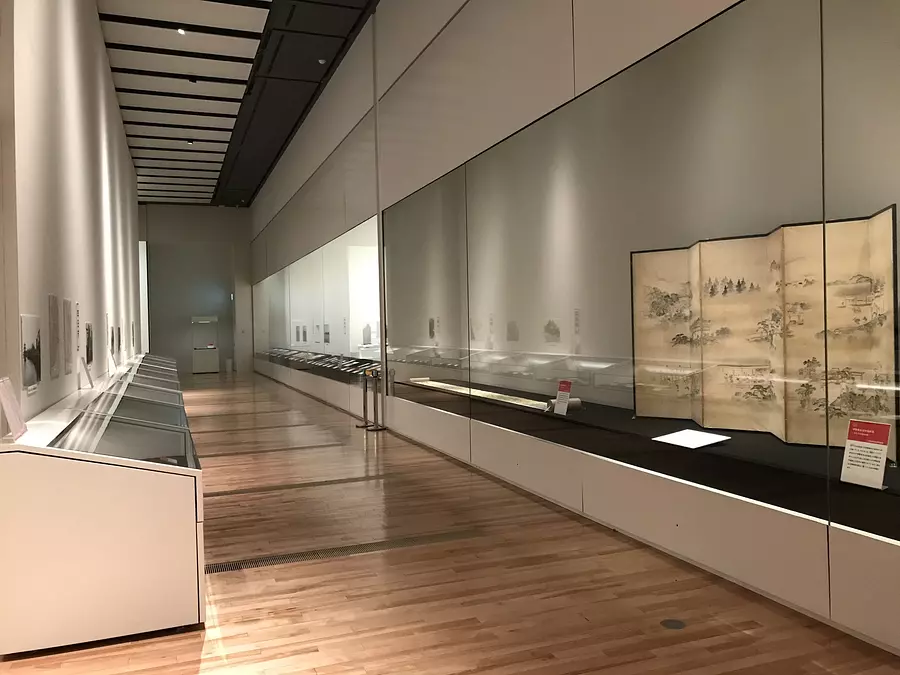
In the first room, under the theme of "Famous Places in Mie Prefecture," the Ise Sangu Byobu and the Ukiyoe Tokaido Gojusantsugi series of paintings by Utagawa Hiroshige and other artists are on display. It is often said that during the Edo period, when travel was not permitted freely, travel to IseJingu was the exception to the rule, and these various paintings clearly show how much Ise attracted people of the time, and that it was truly a place of longing. It must have been a pleasure to visit various places of interest on the way to Ise.
The folding screens and scrolls at the entrance to the exhibition room (on the right side of the photo) are worth seeing. In particular, when I asked the curator about the folding screen depicting the Ise Shrine, I was told that the folding screen was originally stored separately on the left and right sides. This is said to be the first exhibition in Mie Prefecture where the folding screens of Geku on the left and the folding screens of Naiku on the right are assembled together. A folding screen depicting the Geku in the possession of the Nagoya City Museum was first exhibited in 2015, and it was recently revealed that it would be paired with a folding screen depicting Naiku in the collection of the Nezu Museum in Tokyo. In April 2019, the entire collection was exhibited at the Nezu Museum of Art. This exhibition is only available for a limited time (first half: until May 15th (Sunday)). In addition, during the second period (May 17th (Tuesday) to June 12th (Sunday)), another Ise Sangu folding screen (late Edo period) with glittering gold paint will be on display. This will also be my first time exhibiting at MieMu, so I'm looking forward to it.
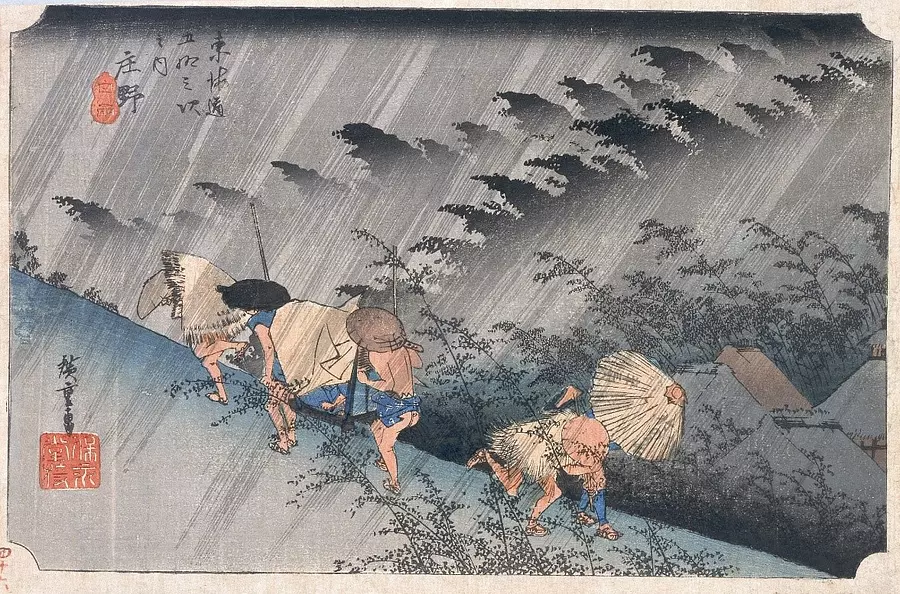
By the way, more than 30 materials will be on display in the second half of the exhibition, so you will be able to see new materials. The exhibition will also include Shono, which is considered one of the masterpieces of the Hoeido version (*). This image was specially provided by the museum for this report. It's definitely a pattern I've seen somewhere. You'll want to go see the later exhibitions as well.
*Hoeido version: Of Hiroshige Utagawa's masterpiece "The Fifty-Three Stations Tokaido," which has more than 20 series, this is the most famous version that Hiroshige painted in his 30s.
Next, there is a display of ukiyo-e prints of the seven post stations along Tokaido in Mie (Kuwana, Yokkaichi, Ishiyakushi, Shono, Kameyama, Seki, and Sakashita), so I recommend taking your time to look at them while reading the explanations. By the way. Some of them depict popular Kabuki actors along with famous places, and others have screen compositions that introduce their appearances in Kabuki scenes. At first glance, it seems unrelated to the scenery of famous places, but it is reminiscent of activities such as promoting famous places through modern influencers and pilgrimages to sacred places as movie shooting locations.
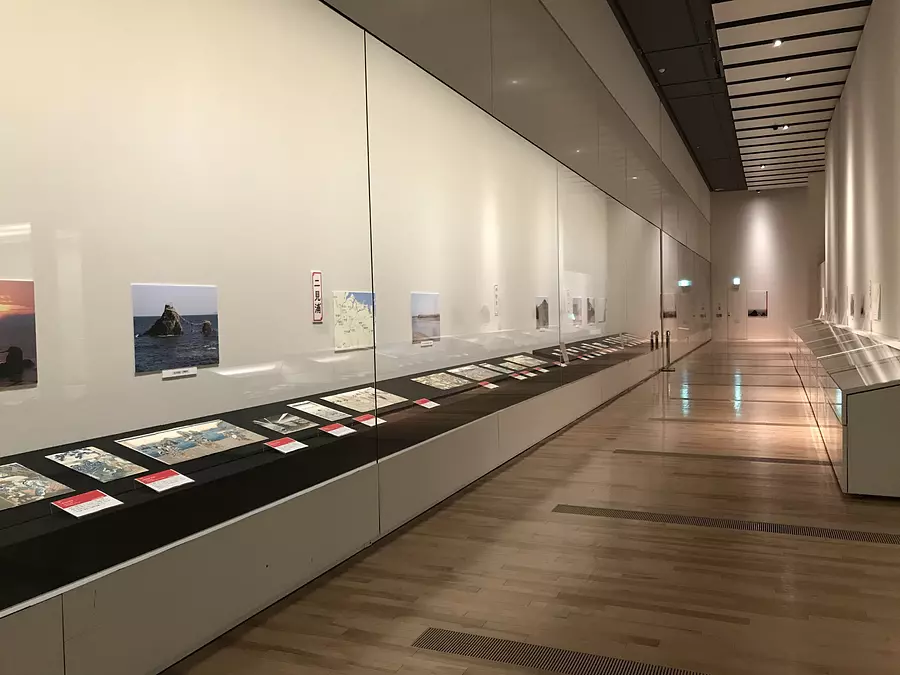
By the way, what impressed me the most in this corner was the explanation that Ishiyakushi's cherry blossoms appear in Van Gogh's paintings! It is often said that ukiyo-e has had an impact on the world, but I was surprised to find out that the familiar sights of Mie appeared in Van Gogh's paintings. The cherry blossoms at Ishiyakushi are a must-see!
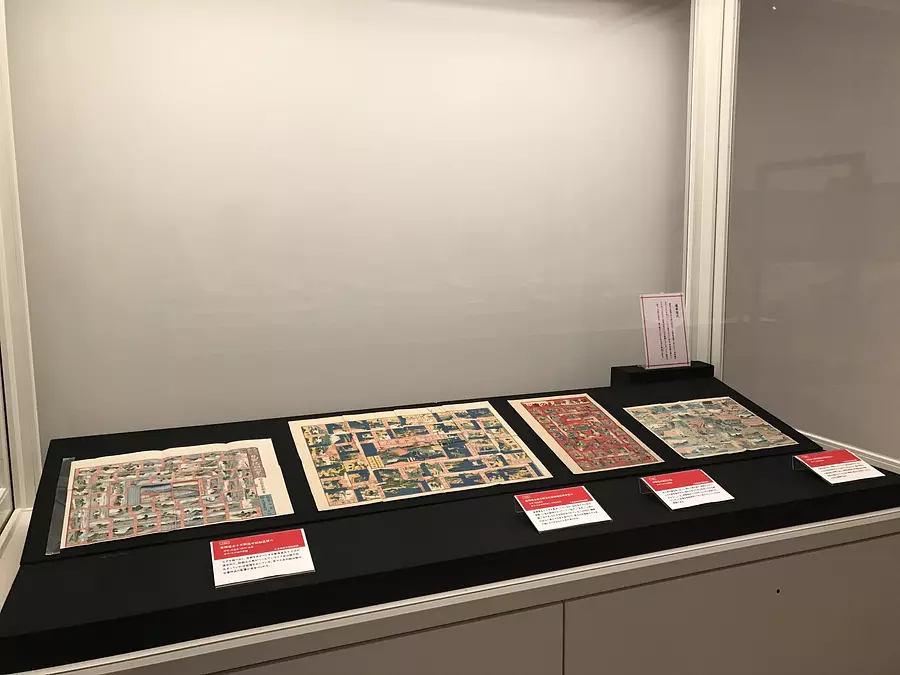
This is a road trip sugoroku with the 53 post stations of Tokaido route drawn in squares. People in the Edo period enjoyed the feeling of traveling by playing games like this. What was impressive was that along with IseJingu, FutamiuraBeach was the goal. Regarding FutamiuraBeach, there were many other ukiyo-e on display, and I realized once again that it is a famous place that represents Mie Prefecture.
Although it cannot be shown in the photo, a folding screen depicting Rakuchu and Rakugai is displayed at the back of this exhibition room. It is said that in Rakuchu, the cityscape of Kyoto and people's activities, including festivals, are depicted, while outside of Raku, temples and shrines and kachiji in the suburbs are depicted. Many of you may have seen it listed in textbooks.
Meisho originally read as ``nadokoro'' and was the subject of Japanese poetry, and gradually began to be depicted in paintings. A folding screen depicting Rakuchu and Rakugai was also displayed to help people understand the historical background of depicting famous places in pictures.
On display are the Rakuchu Rakugai-zu folding screen owned by the Toyohashi City Futagawa-juku Honjin Museum and a high-precision reproduction of the Rakuchu-Rakugai-zu folding screen (Funaki version) created by the National Cultural Properties Utilization Center. The Rakuchu Rakugai-zu folding screen (Funaki book) is a reproduction and is displayed outside the case. Although it is a reproduction, it is said to be a high-definition reproduction that provides a viewing experience that is almost the same as the original created by the Cultural Properties Utilization Center, so you can observe the beauty and detailed depictions of the folding screen up close. . I was surprised by the quality of the work, which was hard to tell at first glance that it was a copy.
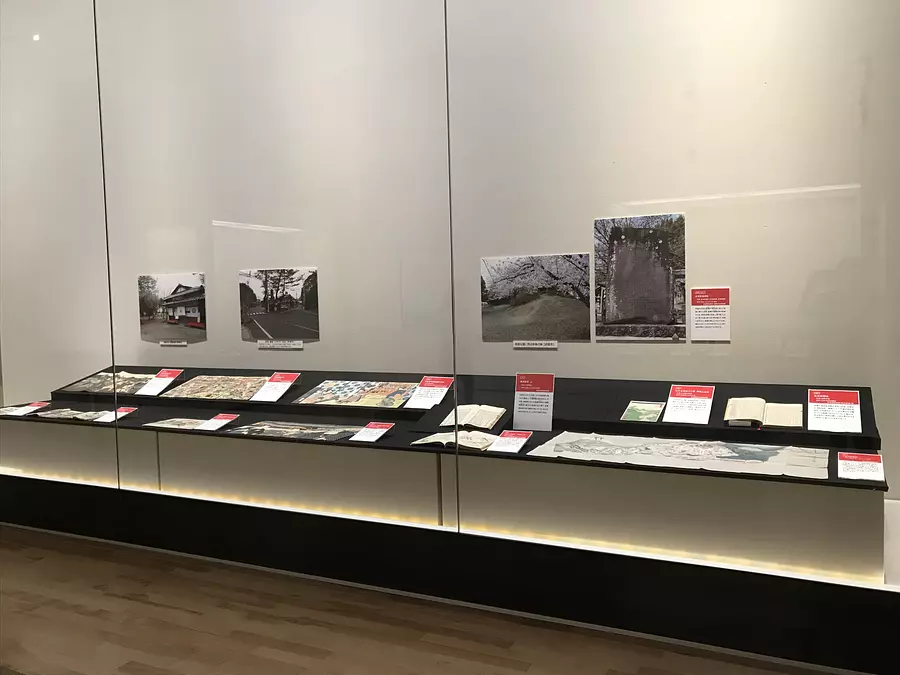
It is said that during the Edo period, new recreational areas for the common people, such as famous cherry blossom viewing spots, were established.
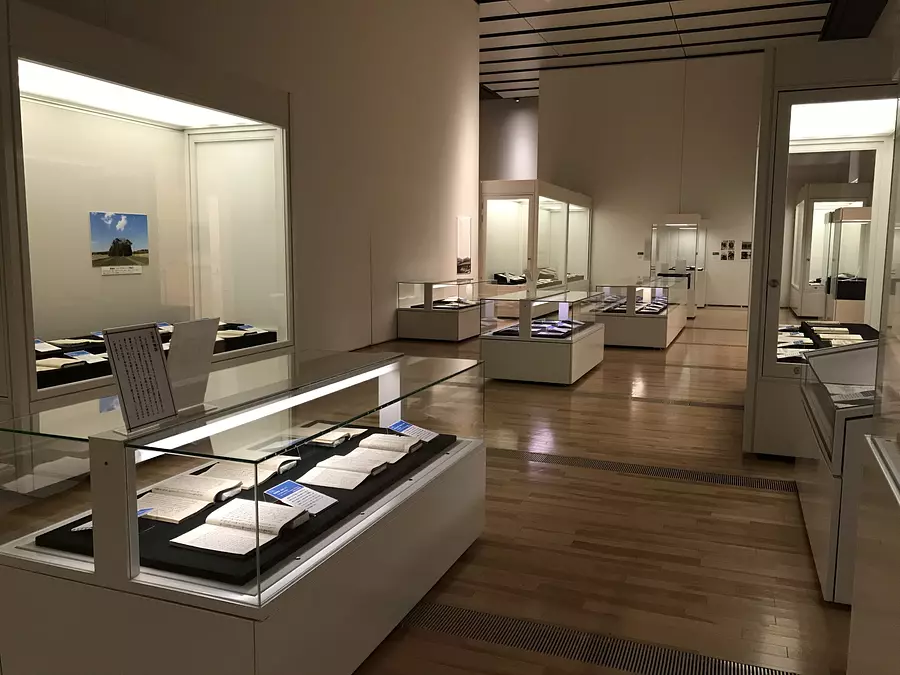
When we think of paintings depicting famous places, we have a strong impression of ukiyo-e prints from the Edo period, but it has been introduced that in the Heian period, Japanese poems were added to folding screens and picture scrolls of famous places. I felt like I understood the purpose of the exhibit from the explanation that place names that appear in waka poems form the prototype of famous places.
From the Muromachi period to the Edo period, famous places were introduced in Chinese poems. I was surprised to learn that it was a Chinese poem that made TheAkame48Falls, one of Mie Prefecture's most famous tourist destinations, known to the world.
It is clear that in this way famous places were discovered in various ways and became established.
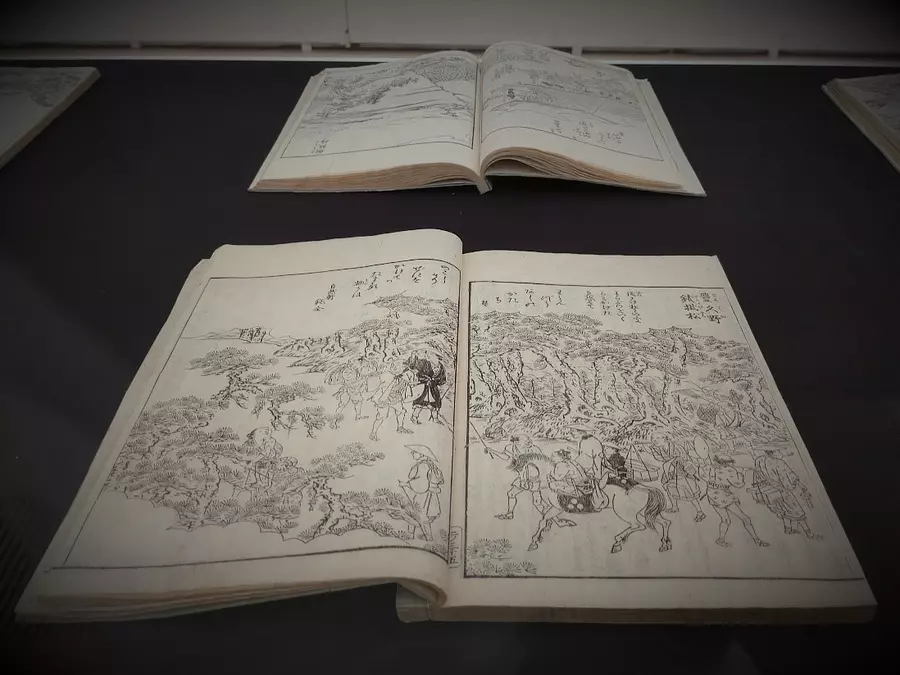
In the next corner, there are many illustrated topographical maps and illustrations of famous places, similar to what we would now call a travel guidebook. There are encyclopedias of famous places and ukiyo-e prints of famous places from all over the country, showing the high level of interest people had in travel and famous places during the Edo period. The illustrations of Meisho Zue are characterized by detailed landscape paintings with bird's-eye view compositions. In modern times, these compositions would be taken with a drone, but in the Edo period, they probably observed the situation on the ground and drew it from their imagination.
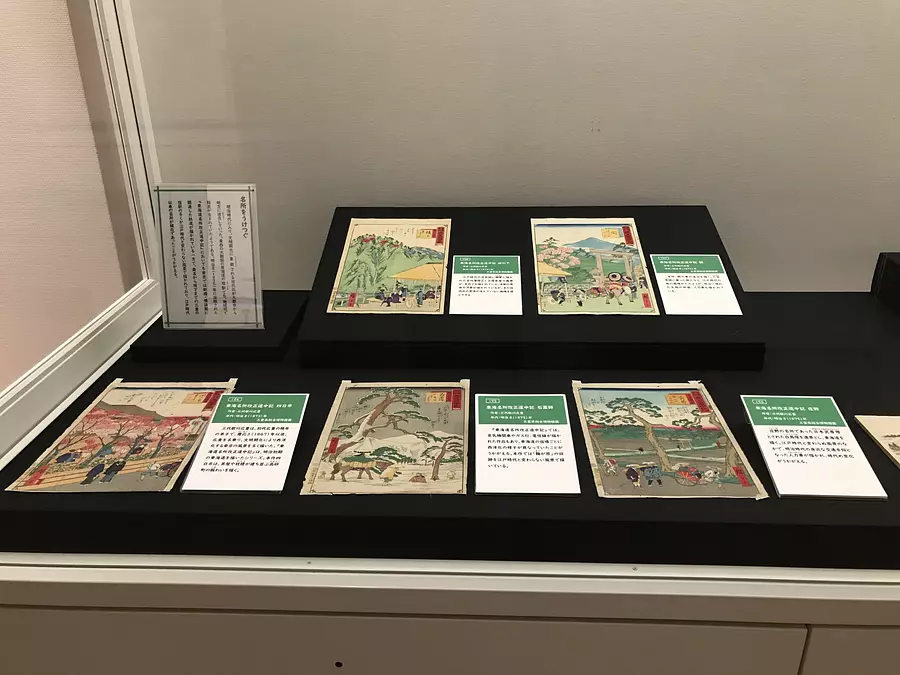
This is a revised travelogue of Tokai famous places written by Hiroshige Utagawa III, published in 1898. You can see the surrounding scenery that retains the atmosphere of the Edo period, and see how people's clothing and buildings have changed due to the modernization of the Meiji era. It's interesting to take a close look at the details.
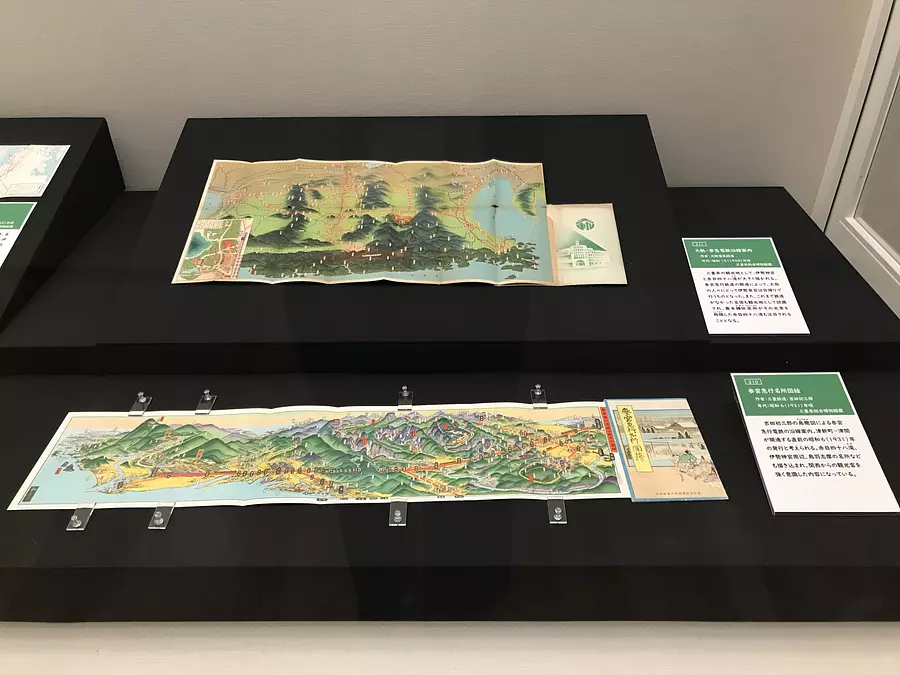
This is a guide along the Sangu Express Railway, which was built in the 20s and 30s of the Meiji era. It is introduced that around this time, post stations were in decline due to the railroads, and new famous spots were born.
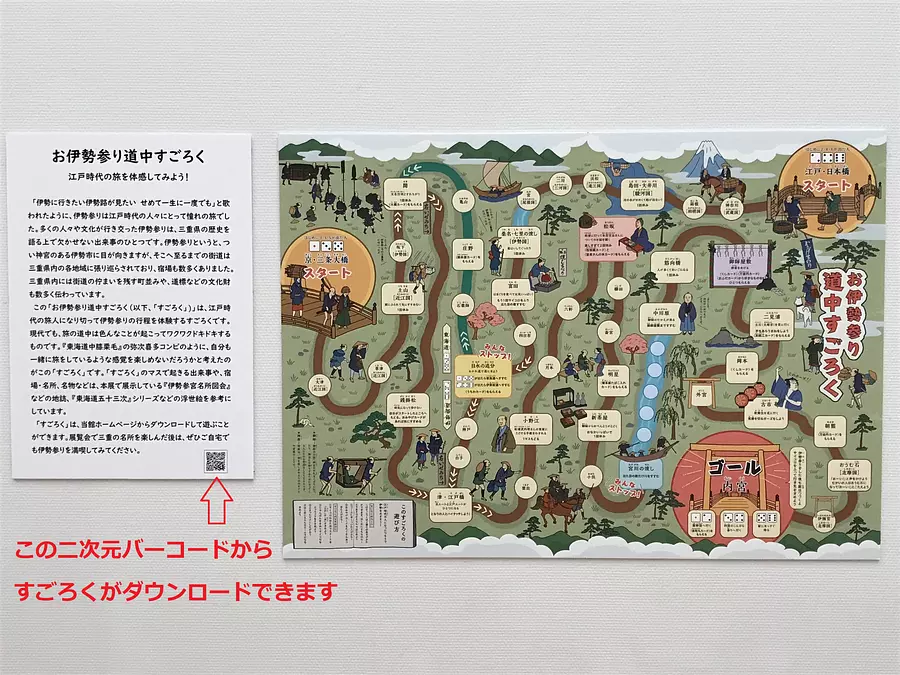
Take a breather here. In the resting area of the exhibition room, there is a Sugoroku on the Ise pilgrimage route posted.
The contents are similar to the famous places we just saw today and the itinerary of the Ise pilgrimage, so both adults and children can enjoy it together. Please play with it at home while remembering the exhibition. You can also access the MieMu homepage where you can download it from the two-dimensional barcode on the panel in the exhibition room.
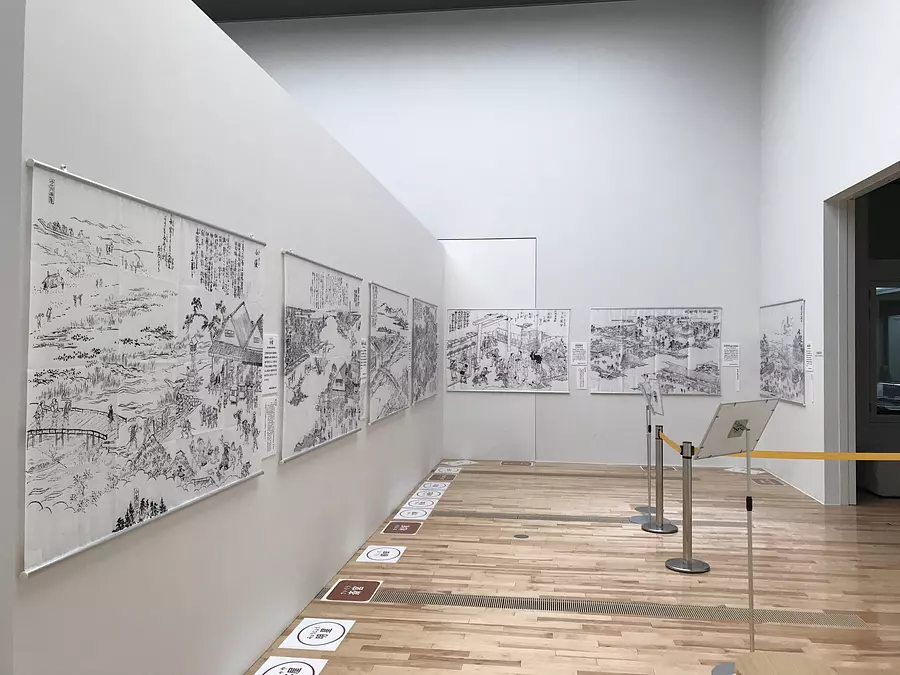
In the rest corner, there is an enlarged panel showing the Ise Shrine famous places, so you can take a closer look at the details.
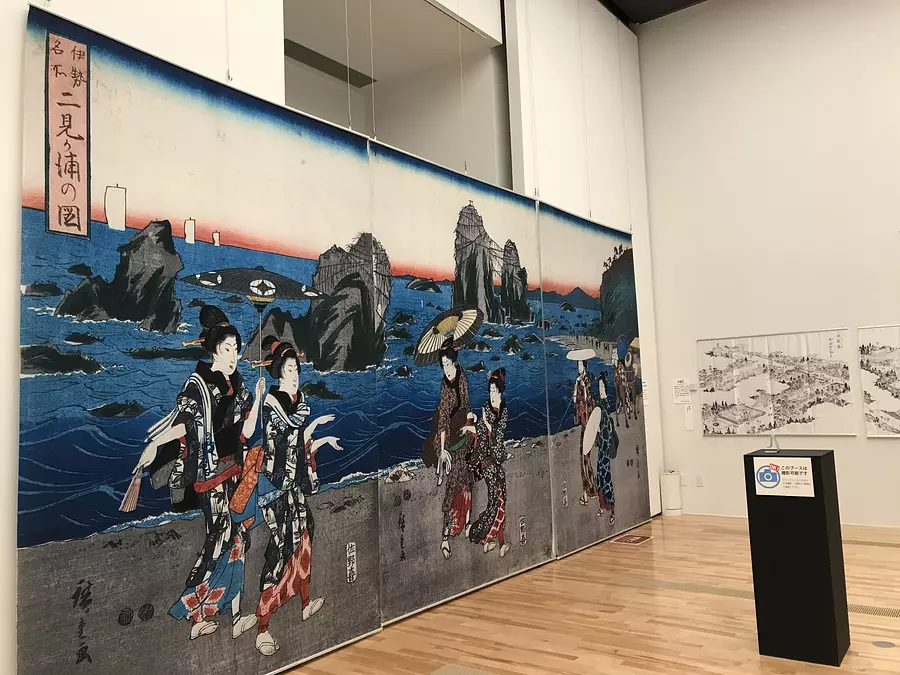
At the last corner, you can take photos and there is a smartphone stand, so I took a photo as a souvenir.
The 30th Special Exhibition, ``Discover and Rediscover Famous Places! - The Charm of Mie through Ukiyo-e'' had a very fulfilling content where you could see many cultural assets and ukiyo-e that you can't usually see. It was a good opportunity to think about how famous places are created and passed down. You can learn about examples of places that were well-known during the Edo period, but have now become unknown, and learn about the unique sights of Mie where people gather and how their charm was created. It was a good opportunity to think.
Please take precautions against infection and go see it. Don't miss the materials that will be on display during the first half (Saturday, April 16th - Sunday, May 15th) and the second half (Tuesday, May 17th - Sunday, June 12th)!
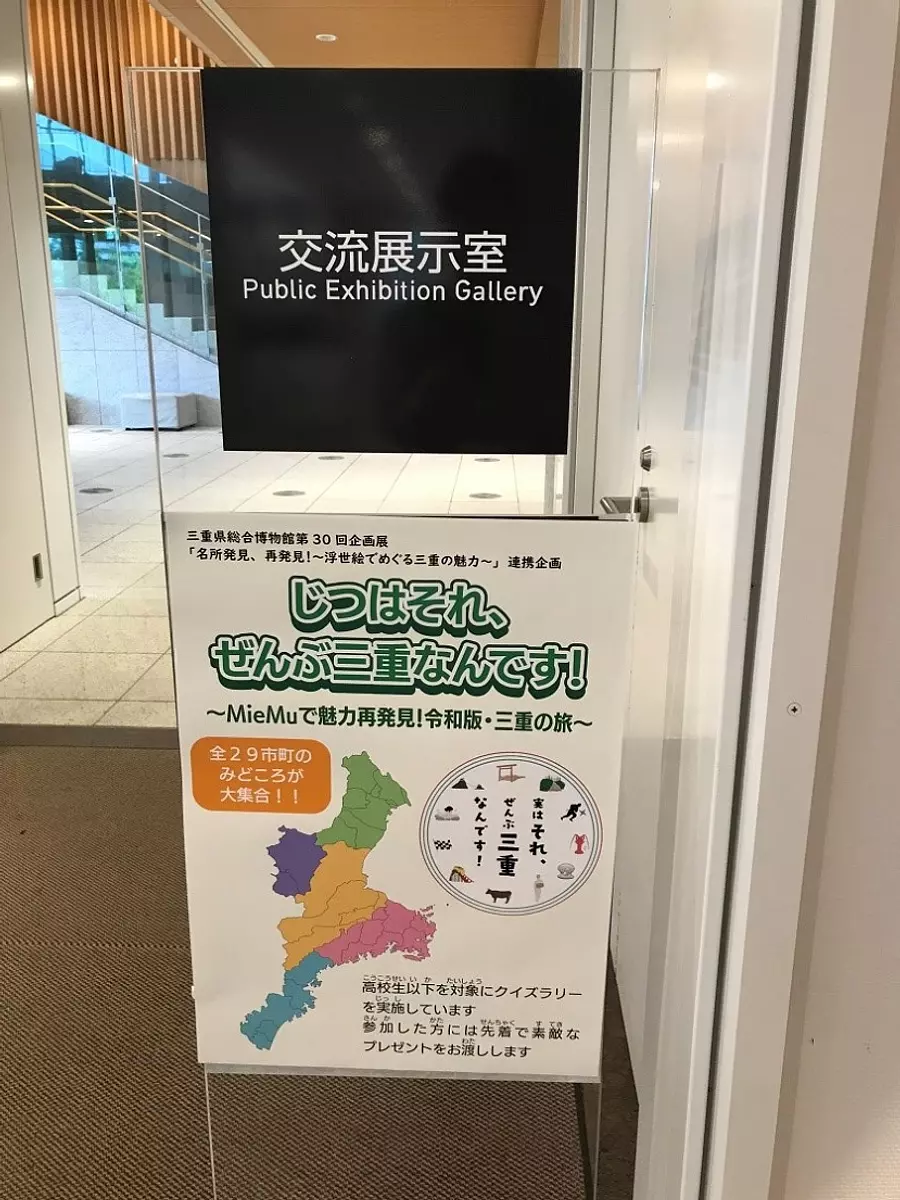
By the way, in the exchange exhibition room on the second floor of the building, we are holding a collaborative project with this special exhibition, ``Actually, it's all about Mie! ~Rediscover the charm with MieMu! Reiwa version of Mie trip~''.
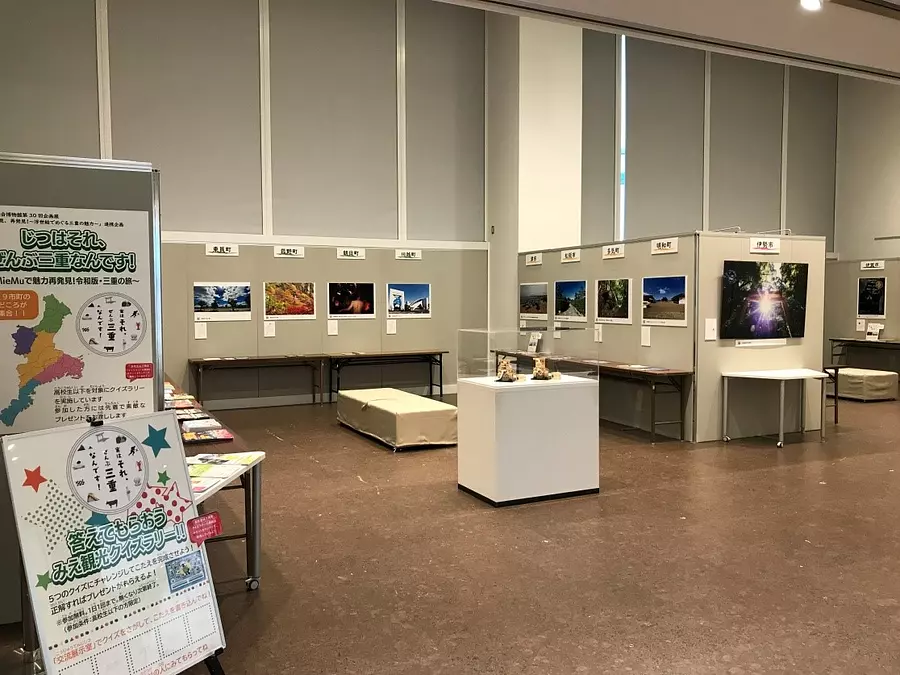
You can take home a pamphlet introducing sightseeing spots in Mie Prefecture, so don't forget to take a look. It seems that there is also a quiz rally for high school students and younger.
Looking at the pamphlet makes me want to travel within the prefecture! It might be a good idea to visit the famous places depicted in ukiyo-e.
Mie Prefectural Museum “MieMu”
059-228-2283
[Basic exhibition]
Adults: 520 yen, university students and vocational school students: 310 yen, high school students and under: Free
Special exhibitions require a separate viewing fee.
9 a.m. to 5 p.m.
*Entry to the exhibition room is until 4:30 p.m.
Every Monday (the next day if Monday is a holiday)
Year-end and New Year holidays (December 29th to January 3rd)
Yes (free)
From Tsu Station, take the train bound for Sogo Bunka Center/Yumegaoka Danchi (system number 89)
Sogo Bunka Center Mae/Sogo Bunka Center getting off immediately
・About 20 minutes from Ise Expressway "Geino IC"
・About 10 minutes from Ise Expressway "Tsu IC"
| Category | |
|---|---|
| area |


